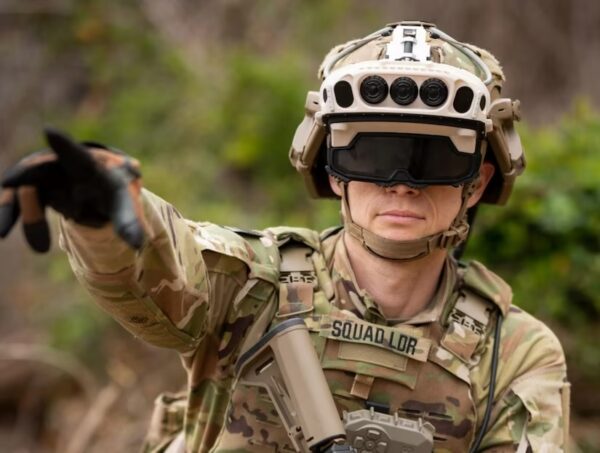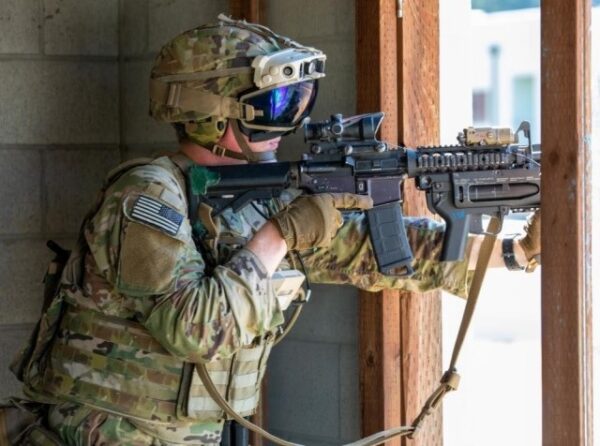
In Mixed Reality News
August 15, 2023 – The U.S. Army has recently announced the delivery of the first 20 prototypes of the Integrated Visual Augmentation System (IVAS) 1.2 variant. The Army stated that the milestone is the latest step in the process of getting the most advanced version of the system in the hands of Soldiers.
Microsoft delivered the 20 prototypes to Project Manager Soldier Warrior (PM SWAR), the program office within Program Executive Office (PEO) Soldier responsible for overseeing the development of IVAS.
IVAS is a multi-billion dollar Army project based on the Microsoft HoloLens mixed reality (MR) device that features an all-weather fighting goggle and a mixed reality head-up display (HUD). The purpose of the project is to deliver enhanced situational awareness tools and high-resolution simulations providing Soldiers with improved mobility and lethality, during the day or at night.
The new variant incorporates reliability upgrades, features an improved low-light sensor and introduces a new form factor with a lower profile head-up display (HUD) with a distributed counterweight for improved user interface (UI) and comfort.
“This is a really big deal for the program,” said Col. Anthony Gibbs, PM SWAR. “A little over a year ago we did an operational test with version 1.0 of the system. We learned a lot. We got a lot of good Soldier feedback. So last summer we came back and restructured the program. We took those lessons learned and all that Soldier feedback and in less than a year have what we now call version 1.2 of the system.”
According to the Army, soldiers and squads will use IVAS to gain a more complete understanding of their operational environment. Its enhanced low-light and thermal sensors improve target identification and also integrates with ground and air platform sensors, allowing Soldiers to see outside vehicles before dismounting into a dangerous situation. IVAS can also provide 3D mapping and navigation capabilities and can ingest data from Unmanned Aerial Vehicles.

“[IVAS] complements what’s currently in the Army’s inventory while expanding close combat force capabilities by leveraging the digital architecture for shared awareness and computing at the edge,” said Lt. Col. Denny Dresch, Product Manager IVAS. “IVAS provides a first-person augmented reality perspective that enables the integrating of operational data such as routes and control measures into the person’s field of view.”
The Army stated that its system’s embedded training tool, the Squad Immersive Virtual Trainer (SiVT), also provides Soldiers objective-based scenarios and battle drills through holographic and mixed-reality imagery, giving units the flexibility to train their squads with minimal resources.
Additionally, the Army notedthat IVAS 1.2 has the capability to attach to a combat helmet with a “hinged” device to allow Soldiers to raise and lower the display, similar to traditional night vision goggles.
“Anybody who has had IVAS on, even the early versions, knows that this is a transformative capability and really has the potential to change the way that we fight,” added Gibbs. “This new version, 1.2, we think it’s really going to hit the mark in terms of what we need to put out there for our Soldiers to give them the situational awareness and the leap-ahead capability they need to stay ahead of our peers.”
The 20 prototypes will be featured at a User Assessment this month, during which two squads of Soldiers will use IVAS 1.2 to measure the system’s performance and ensure engineering efforts are on schedule and meeting design objectives, according to the Army.
To learn more about Microsoft and its HoloLens mixed reality headset, please visit the company’s website.
Image credit: U.S. Army
About the author
Gavril is a knowledgeable contributing author at Auganix. An experienced XR industry news curator, he has been keeping abreast with the latest AR, VR and tech developments for the last four years.
